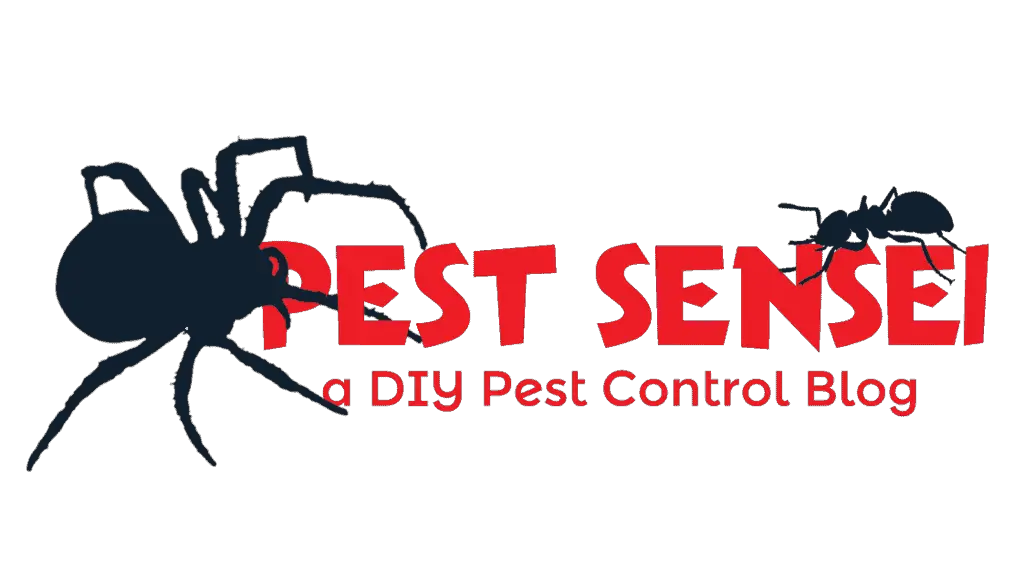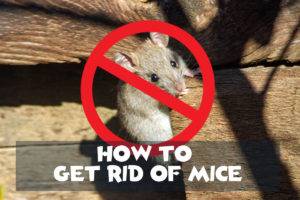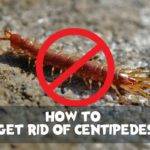Mice are cute, only if they are not running freely in your house. In this article, I’ll teach you how to get rid of mice from your house.
Place baited live catch traps around locations where mice are active. Check the traps daily to remove captured mice. Avoid using rodenticide. You can prevent reinfestation by sealing up all entry points and gaps, and maintaining a good sanitation and housekeeping practice.
Continue reading to understand more.
Introduction to House Mice as Pests
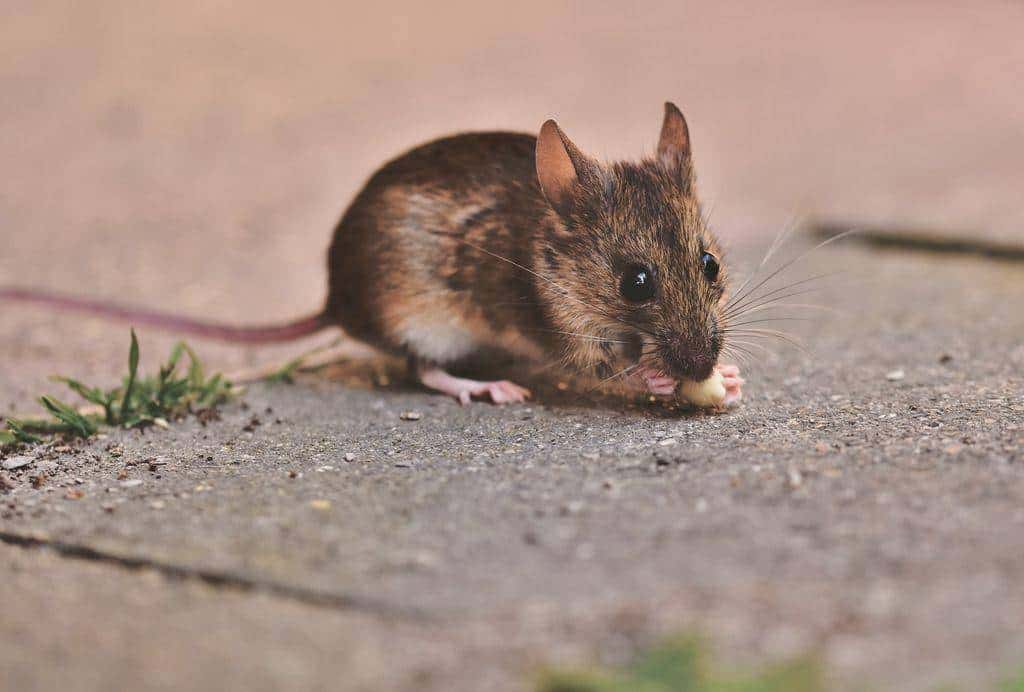
House mice are small rodents commonly found in places where humans live. Compared to rats, house mice are much smaller. They have larger ears relative to their head and their tail is longer than their body length.
While they feed on what we eat, house mice prefer cereals, seeds, nuts, chocolates etc. The water content in their food alone is sufficient to support their need. Their peak feeding and foraging activities are night time.
House mice infestation is a problem that needs to be resolved immediately because they can damage our property, and they can also carry diseases.
If you are keen to understand more about the biology of house mice, do check out its Wiki.
Tell-tale Signs of Mice Infestation
There are few signs that you can look for if you suspect there are mice at home. That includes:
- Gnaw marks
- Droppings
- Urine
- Smear marks
- Footprints
Gnaw marks
Mice love gnawing to keep their ever-growing incisors short. They gnaw on almost anything including woods, rubbers, plastics, cables, packaging etc. They can make smooth holes as big as 1-1.5” in diameter from gnawing.
Droppings
Mice droppings are rod-shaped, about ⅛-¼” in length. They look like black colored rice grains. Presence of fresh dropping signifies new infestation.
Usually, droppings are found at undisturbed places that you rarely use such as storage areas, attics, underneath cabinets etc.
Mice droppings carry harmful pathogens. They should be cleaned and the affected area should be disinfected ASAP. Always wear gloves when clearing mice droppings.
Cleaning the droppings also helps you monitor the treatment progress. If there are new droppings after clearing them, the mice are still around.
Urine smell and stain
Mice use urine to mark their territory. It appears as a dark stain and gives off a terrible smell that will last for a long time.
You should clean and disinfect the urine stain to eliminate any possible disease-causing pathogens. Make sure you wear gloves when doing that.
To remove the foul odor, you can use deodorizer such as Fresh Wave Odor Eliminator.
Smear marks
Smear marks are grease or dirt accumulating on a surface as the mice walk on the same spot repeatedly. It appears as dark spots along walls and piping that the mice use as their runways.
Footprints
You will be able to see footprints if the area is dusty or on loose sand or soil. House mice have 4 toes on their front feet and 5 toes on their rear feet.
In the pest management industry, we sometimes use UV torch light and fluorescent gel to help us detect mice.
Locating and Removing the Nest
House mice tend to stay relatively close to their food source and typically nest within a range of 10-30 feet. If you notice signs of infestation within your home, it is likely that the nest is situated somewhere within your premises.
It is advisable to actively search for the nest as soon as possible to address the infestation effectively. House mice tend to seek out quiet and undisturbed areas for nesting, which can include spaces such as attics, crawl spaces, wall voids, unused boxes, unvisited corners, and even electrical compartments of machinery. To locate the nest, you may need to move furniture and cabinets to carefully investigate these areas.
Once you have located the nest, it is crucial to take swift action. Quickly and securely transfer the nest into a garbage bag, ensuring to double-bag it for added safety.
Depending on your preferred approach, you can either release the mice into the wild at a location at least a mile away from human dwellings or employ appropriate methods to eliminate them.
Remember to wear protective gloves when handling the mouse nests, as they can carry pathogens that may pose health risks.
Even if you are unable to directly locate the nest, having an understanding of the areas where mice are actively present can provide valuable insights for trap placement and implementing preventive measures. This knowledge can guide you in strategically positioning traps or conducting proofing measures to effectively address the issue.
Catching the Mice
If you can’t find the nest of the mice and relocate or destroy them, you will have to catch the mice.
To catch mice, you need traps. Traps are more effective if they are baited. You can use peanut butter, chocolate, fish bones, chicken bones, dried squid etc as bait.
For baited trapping to be effective, you need to remove all competing sources of food for mice. Keep other food in secure containers so that the mice can only go to your trap for food.
Place the traps around locations where you found mice activities such as droppings and gnaw marks, and potential runways. The more traps you place, the higher the chances of catching the mice.
Live Catch Traps
I strongly recommend using live catch traps to catch mice.
The best live catch trap I’ve used so far is known as the Tin Cat. It has 2 one-way entrances for the mice to go in but not out.
Because mice are curious, a trapped mouse will attract more mice to come and “help”, and hence you are able to catch multiple mice with one trap. My highest record was 9 mice over 1 night in a single trap!
Another live catch trap worth mentioning is the Flip N Slide Bucket Lid Mouse Trap. It can be installed on a 5 gal bucket and has a lid that flips when the mouse walks over it. A single trap can contain up to 30 mice. Get this trap if you have a serious issue with mice.
Compared to the Flip N Slip trap, Tin Cat is smaller and cheaper. You can place them in hidden dark corners, where the mice love to hide. Placing multiple traps can increase the chance of catching the mice. On the other hand, the Flip N Slide trap is bulkier. It is more suitable for bigger places with a heavy mice infestation.
It is important to check the traps daily and promptly remove any captured mice to avoid unfortunate situations where they may resort to cannibalism. Trust me, it can lead to a messy outcome that is best avoided.
If possible, consider releasing the trapped mice into a suitable natural habitat, preferably a wooded area where they can find ample shelter and food resources. It is recommended to release them at least a mile away from your home to prevent their return and to minimize the risk of infesting other households.
Some people kill the trapped mice by drowning them in water, which is rather cruel.
Snap Traps

Snap traps are a cheap and humane way to kill mice. However, it can be dangerous if not handled properly because it can break your finger. Snap traps should be baited and placed at places inaccessible by pets or kids such as in the ceiling, underneath cabinets.
Make sure you buy the right snap trap for mice. Snap traps for rats require a much higher force to trigger, and hence are ineffective for mice which are smaller in size.
Zappers
Zappers are effective in killing mice, but I don’t fancy zapper because it is difficult to clean. When the mice are zapped, they may lose control of their bladder and urinate. I am not sure about you, but I don’t want to clean that.
Zapper can also be dangerous if you have kids at home. It doesn’t discriminate between mice and humans.
Glue Boards
Using glue boards is considered the least humane method for eliminating mice. When mice become trapped on glue, they do not experience an immediate death. Instead, they may resort to desperate measures such as attempting to bite off their own glued limbs in a desperate bid to escape. Ultimately, they suffer a slow demise due to starvation and dehydration.
Another drawback of using glue boards is the potential risk of inadvertently trapping non-target creatures, including pets, birds, and even children. This poses a significant concern as it can lead to unintended harm or distress to these unintended victims.
The primary advantage of glue boards, if any, lies in their affordability as they tend to be inexpensive. However, it is important to consider the ethical and practical implications before resorting to this method.
Rodenticide Bait
Rodenticide baiting or mice poison is often the last resort to control mice. I don’t recommend you use bait unless the mice population is out of control.
Another issue with baiting is hidden dead carcasses. If the mouse dies inside your house, you may not be able to find the carcasses, which will rot and attract other pests like flies. The odor of dead mice is unpleasant, although not as strong as that of rats. If required, you can use Fresh Wave Odor Eliminator to remove the odor of the dead mice.
If you decide to use bait, please make sure you read the product label before using it. Most rodenticide baits are only allowed for outdoors use, and they should be kept in a secured tamper-resistant box to prevent consumption by non-target animals such as cats, dogs, kids etc.
The rodenticide bait must be secured using the metal rod included in the boxes. This will prevent the mice from dragging out the baits and exposing the baits to non-target animals.
Put the bait boxes outdoors along the mice runway, preferably out of sight so that curious kids will not play around with it. If possible, label it as “poison” and put down the name of the rodenticide you use. Secure the bait box with long nails or Liquid Nails so that they won’t go missing.
For the treatment to be effective, you need to put a few bait boxes. Mice are nibblers. They feed multiple small meals a day from different food sources. Having more bait boxes will increase the chances of mice ingesting the lethal dose of the bait. You also need to remove all other food sources so that the baits are the only food available for the mice.
Check the bait boxes weekly and top up the bait if required. It takes about 1-3 weeks to resolve a mice issue, depending on the infestation level and the product used. Make sure you use only EPA-approved rodenticide!
If you are looking for rodenticide baits, I recommend you to get 1 of the 2 below. Although I prefer anticoagulant-based rodenticide, EPA has restricted over the counter sale of anticoagulant rodenticide so I wouldn’t list them here.
Selontra
If you prefer a safer option, consider getting Selontra. It contains cholecalciferol, more commonly known as vitamin D3. Mice are mummified by ingesting high doses of cholecalciferol. This is a good example that shows anything can be poisonous if the dosage is high enough!
The only issue with Selontra is the speed of control. It takes about twice as much time or more to clear a mice infestation using Selontra than other more toxic products.
Fastrac All-Weather Blox
If you want to achieve the result faster, you can consider Fastrac All-Weather Blox. It contains bromethalin, a neurotoxin that kills mice within 1-2 days in 1 feeding.
The same toxin will kill humans and pets if enough bait is consumed. Luckily, the bait contains denatonium benzoate, the bitterest chemical compound on earth to deter accidental feeding by humans. Mice are not as sensitive to bitterness as humans and other animals so they will still feed on the bait.
How to Prevent Mice
You can catch as many mice as you want but it will not stop the mice from intruding if your house is attractive to them. To prevent mice infestation, we need to target 2 areas: proofing and sanitation.
Sealing Entry Points
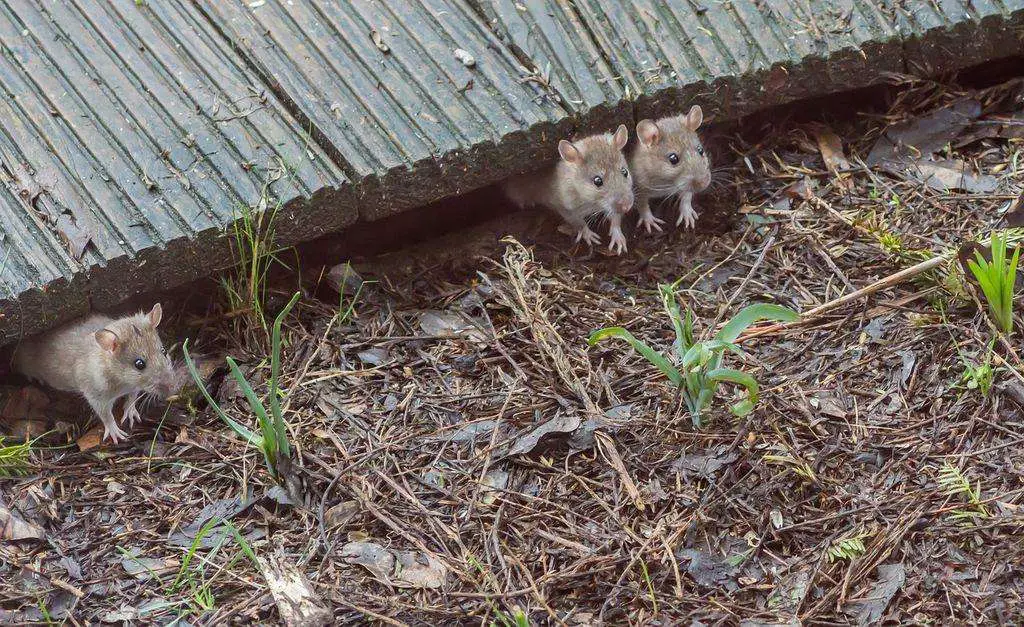
The easiest way to prevent mice infestation is to stop them from coming in the first place. If you can close off all the entry points, the mice can’t get in.
Look for cracks and holes around your house which can be utilized by mice. Mice can squeeze in through gaps as small as ¼” or holes as small as a dime. If there are holes or gaps that mice can go through, seal it up using caulking or steel fabric. Don’t use tapes, silicon or woods because mice can chew through them.
Use heavy duty rubber or metal door sweep instead of plastic or wooden ones on all your doors leading to the externals. Mice can bite through low quality door sweeps and invade your home.
Lastly, trim your trees so that the branches are at least 1 foot away from your building. This will prevent them from jumping into your house through the trees.
Xcluder® Fill Fabric
Xcluder® Fill Fabric is a “clean” alternative to caulking. It is made of steel wool. The sharp steel wool hurts rats’ mouths when they attempt to gnaw on it.
The application of Xcluder® Fill Fabric is very simple (refer to video below). You only need to cut it into the desired size to fill up gaps where rats can enter buildings. You don’t have to deal with caulking, which can be messy if you don’t have prior experience doing it.
Caulking Foam
To effectively seal mice entry points, you can utilize any caulking foam that suits your preference. However, it’s important to note that mice can chew through caulking material.
To reinforce the seal, it is recommended to insert a wire mesh into the gap before applying the caulking. This additional layer acts as a deterrent and provides added protection against mice intrusion.
Good Housekeeping and Sanitation Practices
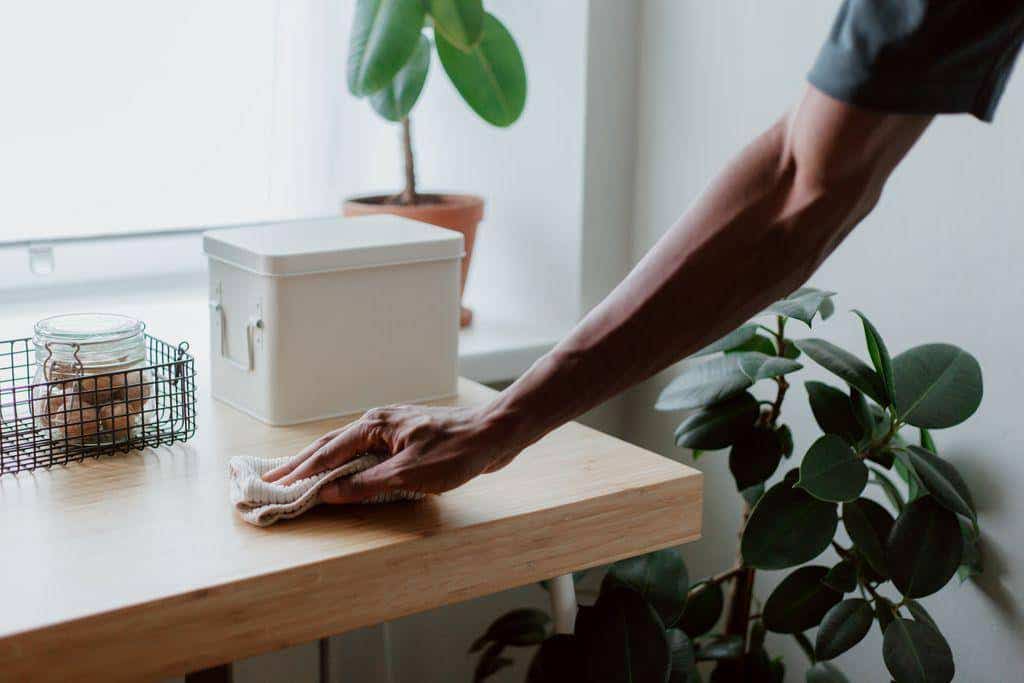
Mice go into your house for either food or shelter, especially in the winter. To make your house less attractive to mice, you need to improve your housekeeping and sanitation practices.
Good dining practice
Make sure everyone in your house eats only at the table to reduce and localize spilled food. Clean the table and spilled food or drinks ASAP before the end of the day.
Managing food wastes
Clear the food waste in the sink. Food waste should be kept in a rubbish bin with a lid. Bagged garbage should be thrown into the trash bin, not placed outside the trash bin because mice can bite through the plastic bags.
Safekeep your food
You should also keep all your food in airtight containers or in closed cabinets with no gaps. Mice can easily bite through plastics. By not leaving any food exposed, the mice will hate to stay in your house.
Reduce clutter
Reducing clutter makes it more difficult for the mice to find a place to hide. It also makes it easier for you to see the mice before their population explodes.
Don’t forget the pets
If you have pets, remove all unfinished pet food at night and clean off any spillage. This will reduce the mice’s access to food.
Products that Do Not Work
It is not surprising to see many innovations on mice products. In this section I’ll tell you which products don’t work.
Ultrasonic
Ultrasonic devices for mice can still be found in the market despite proven not effective. After all, technology keeps improving and what didn’t work yesterday may work today isn’t it?
The claim for ultrasonic devices is simple. Mice can hear and emit sound at a frequency not audible by humans. The ultrasonic device emits distress sound from mice or any other sounds that make the mice feel uncomfortable. As a result, the mice are chased away. It sounds logical but unfortunately, it doesn’t work.
Trust me, if someone ever invents an ultrasonic device that works for mice, you will see it all over the news.
What about all the 5 stars ratings on the product review? Well, I can’t comment much.
Essential Oils, Peppers, Vinegars, Garlic etc.
You might see some people promoting essential oils, peppers, vinegars, garlic and all sorts of natural remedies claimed to effectively repel mice. Well, they don’t work…
Other Repellent
There are commercially available mice repellent. Such products usually contain substances that are proven in the lab to repel mice. Unfortunately, their performance in the field is not as good as that in the lab. I have no confidence in using such products and I wouldn’t recommend you to try.
Final Words
Mice infestation can be difficult, or frightening to deal with. Be sure to get help from a pest control service provider if you can’t handle it. You can get non-obligatory quotes from your local service providers on Networx.
Lastly, do share my blog if you find it helpful!
